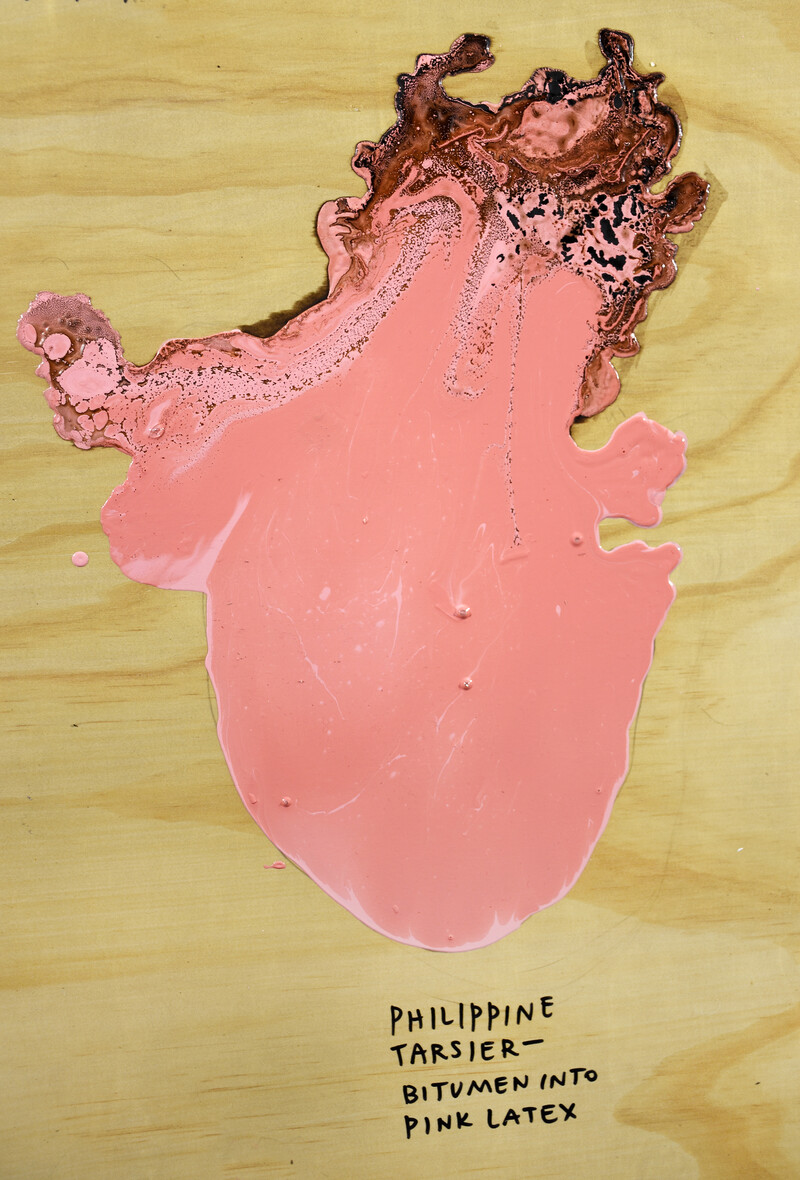- 03.0Cover
- 03.1IBC (Indian Brand Corporation): Dystopic AutonomyJoseph Tisiga
- 03.2How to Read this Broadsheet
- 03.3Carrying CapacityMarina Roy
- 03.4Open Letter to the Federal GovernmentW.R. Peltier, D.W. Schindler, John P. Smol, David Suzuki
- 03.5Claiming Bad KinAlexis Shotwell
- 03.6A Brief History of FeelingJacquelyn Ross
- 03.7Energy-Bearing MediaJeff Diamanti
- 03.8Figures 1928, Airline routes and distancesMalala Andrialavidrazana
- 03.9What is Growth?D.T. Cochrane
- 03.10This, Too, Will ContaminateJoy Xiang
- 03.11The Need for Urban Climate JusticeSara Hughes
- 03.12The role of municipalities in changing behaviours
The Climate Change Project, City of Mississauga
- 03.13A PEOPLE'S ARCHIVE OF SINKING AND MELTING: NUNAVUTAmy Balkin
- 03.14Local Useful Knowledge: Resources, Research, Initiatives
- 03.15Glossary
Carrying Capacity
- Marina Roy


Georges Bataille spoke of art as squandered energy—a gift to the world—without instrumental purpose, counter to the type of productivity that, aimed at amassing profit, commodifies all life forms (and forms of life) today. Making art can be a social transgression and an ethical reaction to the capitalization of life by corporate sovereignty—turning the planet into a machine, pumping out nihilistic surplus via creaturely suffering. Under this logic, economic growth is bound up with material extraction, territorial expansion, and exploitative labour.
The sun gives freely of its energy. Combined with the atmospheric/climactic conditions on Earth, it has given rise to a vast range of life forms being thrown into existence, and dying off. An abundance of energy has been channelled into and through living and dead biomass, along complex chemical chains: anaerobic organisms, bacteria, fungi, plants, animals, and humans interpenetrating, consuming one another, sustaining one another, in symbiosis. Geological deposits of organic matter—pockets of extinct decaying life forms trapped in the earth’s crust—have been converted into fossil fuels under extreme pressures over hundreds of millions of years, in particular coal, natural gas, and oil. These are highly concentrated forms of energy, which, when burned by billions of humans, have made possible a high degree of productivity, comfort, and luxury (although by no means equally across the globe).
These vast pockets and wells of energy, concentrated here and there within the earth’s crust, have been burned in a little over a century, in the name of human ingenuity and “progress,” largely consumed to heat dwellings, power machinery, and transport commodities and humans—cutting across high seas, blazing across the sky, and cruising down asphalt strips—magnificent feats of space-time compression.11David Harvey, The Condition of Postmodernity: An Enquiry into the Origins of Cultural Change (Cambridge, MA: Blackwell, 1990).
Concerned by the high rates of species extinction and decreasing livability due to the cumulative effect of risky industrial practices and exorbitant energy expenditure, ecologically conscious citizens have warned of the limited “carrying capacity” of the earth.22Allan Stoekl, Bataille’s Peak: Energy, Religion, and Postsustainability (Minneapolis: University of Minnesota Press, 2007), 37. If the rate of extraction, consumption, and waste production continues to accelerate, or even continues along at the same rate, who will survive the disasters of climate change? How much displacement, poverty, suffering, and death will result from runaway capitalism, as we crest that wave, and descend from that irreversible tipping point? As the world closes in on itself, mineral and fossil fuel extraction become reasons for military intervention, powerful nations vying for advantage through any excuse they can muster—civilization-versus-barbarism arguments unfurl in the scramble to secure scarce resources.
If the conspiracy theories, lies, and indifference continue, if business carries on as usual, tar-coloured silhouettes will be all that is left of our vibrant land, sea, and aerial creatures… at least for those fortunate enough to be crushed between sedimentary rock—as future fossils. Ubiquitous will be the traces of petrochemicals that, at the end, have infused every aspect of our lives, outliving all that fleshy matter—and releasing various ghostly forms, the result of so much profane, instrumental suffering, living on in or as humus, traumatized matter passed down the chain. Will the final indignity of historical memory, whether natural or cultural, be a general eclipse of this once diverse life within endless tendrils of microplastic, subsisting, entwining itself into ever new alien life forms?
See Connections ⤴